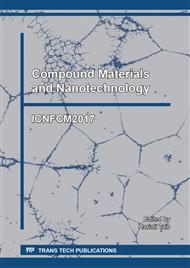p.3
p.8
p.15
p.20
p.26
p.33
p.39
p.47
Dual Functionality of TPU Nonwoven Prepared by Argon Plasma Treatment: A Method Forming Asymmetric Surface
Abstract:
Thermoplastic urethane (TPU) nonwoven is characterized by high elasticity, tensile strength, large elongation and structural stability and widely used in biomaterial. However, the hydrophobic nature of TPU nonwoven restricts its application. To improve surface hydrophilicity and hydrophobicity, the surface modification of materials is carried out by plasma treatment or ion-beam irradiation. According to the wettability treatment experiences that substrate usually using two processing or more to get one side hydrophilic and another side hydrophobic. In this study, use of cold plasma treatment in enhancing surface wettability of TPU nonwoven was studied. The surface properties of plasma treated films are characterized by Atomic Force Microscope (AFM), water contact angle measurement, and scanning electron microscopy (SEM). This study has demonstrated that Argon plasma treatment produces hydrophobic or hydrophilic surface on the TPU nonwoven. The method is performed by first placing a hydrophobic material on one side of substrate and bring this side to face the lower electrode. By controlling the RF power of the reactor, hydrophilic or hydrophobic surface can be prepared on the other side. This technique can be applied to wound dressing.
Info:
Periodical:
Pages:
3-7
Citation:
Online since:
November 2017
Authors:
Keywords:
Price:
Сopyright:
© 2017 Trans Tech Publications Ltd. All Rights Reserved
Share:
Citation:


